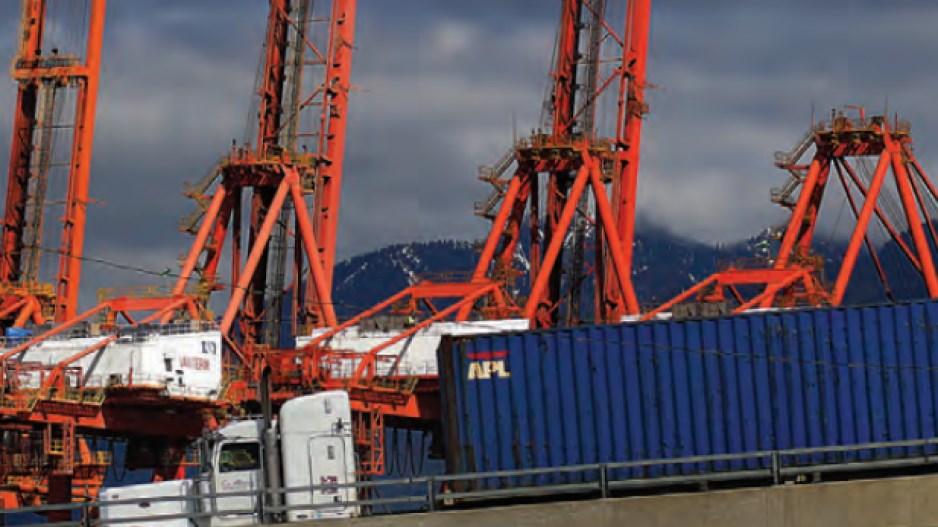A Canadian think-tank is sounding the alarm on Canada’s trade infrastructure, saying the precipitous fall of the Canadian system in global rankings in recent years should be garnering much more public attention than it has so far.
In a Canada West Foundation report titled From Shovel Ready to Shovel Worthy, authors John Law and Carlo Dade highlighted that, in the World Economic Forum’s (WE F) annual infrastructure rankings measuring each country’s confidence in their own networks, Canada dropped from 10th place in 2009 (between the United States and the United Arab Emirates) to a staggering 26th by 2019 (between Poland and Hungary).
Canadians’ confidence in transport infrastructure fared even worse. It ranked 32nd in the world behind countries such as Azerbaijan, Finland and India. And that lack of confidence is not restricted to within Canada.
The World Bank Logistics Performance Index, which measures how foreign partners view a country’s trade infrastructure, Canada was the only country within the Five Eyes that saw its score drop close to 0.5 basis points – about a 12 per cent decrease – between 2010 and 2018.
When combined with the fact that Canada generates about two-thirds of its GDP through trade, the falling trade infrastructure number becomes a huge red flag, Dade said, even if the Canadian public appears to have little interest in improving the situation.
“It’s a question that our customers and potential investors ask all the time: ‘Why are people not paying attention?’” said Dade, who is also the director of Canada West’s Trade and Investment Centre.
“The answer has to do with the fact that Canadians are divorced from the reality of how the country makes its money.”
The public apathy, in turn, leads to apathy from political leaders in Ottawa and elsewhere, Dade said.
In contrast, he noted that both U.S. President Joe Biden and Transportation Secretary Pete Buttigieg have been at the forefront of pushing the United States to improve its trade infrastructure, and that the United States slid only four places (from ninth to 13th) in a decade in the WEF infrastructure rankings. “You want an indication that this is a priority [in the U.S.]? Every week, you get something from the highest levels of government,” Dade said. “The Americans dropped a few places, and you can’t get Biden or Buttigieg to shut up about it.
“To be fair to the federal government, they have finally – after eight years – started some fairly significant progress with the National Infrastructure Assessment [announced in 2020].
“However, as a foreign customer or an investor, I see the announcements, but I don’t see the commitment or the articulation of these initiatives as a national priority.”
Law, a Canada West senior fellow and a decorated public-private service official in the Canadian transport sector, noted in the report that there is a precedent for success in Canada on a well-organized infrastructure initiative. He said the Asia-Pacific Gateway and Corridor Initiative has been well received by industry and government officials. It has also earned international accolades in bringing a coherent set of investment/policy measures to advance infrastructure goals.
The keyset of “ b u i l d i n g blocks,” Law noted, must include policies that clearly define Canada’s national trade corridor network, develop criteria “of national importance” to guide decision-making, institutionalize advice and input from the private sector, maintain a long-term project pipeline and regular process assessment and upgrade data/ intelligence gathering to forecast what’s happening on the ground.
“Lessons from Canada’s successful trade corridor history and best-practice learnings from competitor countries have the potential to make manageable the daunting task of establishing a new national framework to enable Canada’s economic future,” the report said.
Without such concrete moves that look beyond piecemeal development of “shovel ready” smaller projects that do not achieve a long-term goal of connecting to a national trade transportation network, Canada will not be able to stave off the continued decline of its trade competitiveness during a time when it is needed the most, the report argues.
“The urgency to move forward with tangible first steps cannot be overstated,” the report said.
Law added that there are opportunities to act now.
“... Throughout the interviews and public discussions that were part of the research for this report, private sector stakeholders ... have stated a willingness to contribute to the steps necessary for long-term structural improvements to how the country manages the trade infrastructure file.”
The report added that “unlike other infrastructure asset classes like schools, hospitals and parks, in Canada the private sector is often the biggest user, the largest owner and primary operator or funder of trade infrastructure assets. It has unique proprietary information critical to making intelligent informed choices. ... Assuring that the private sector has a meaningful role in implementing the recommendations in this report ... is a key ingredient for success.”
The full report can be read at cwf.ca/series/reports. •




